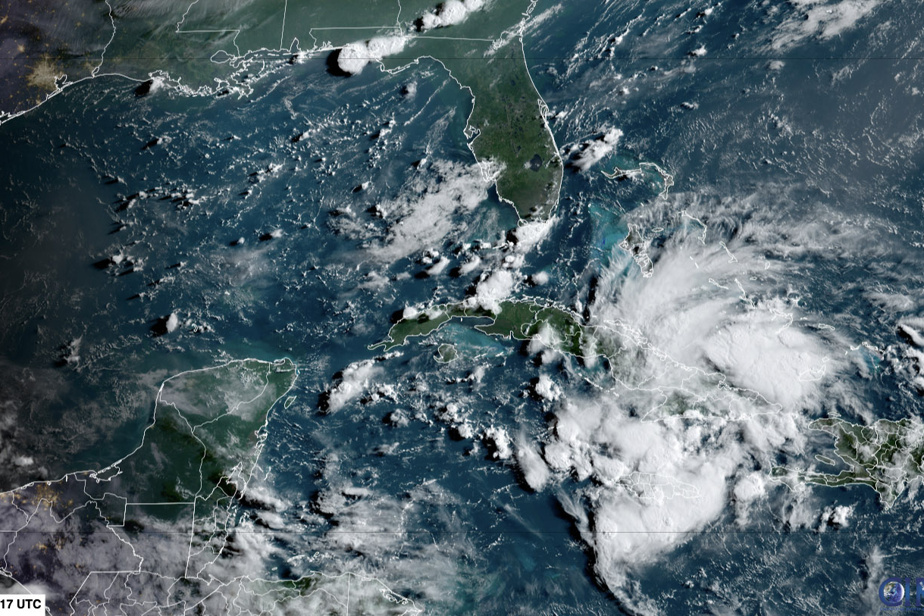(Miami) A tropical depression strengthened into Tropical Storm Debby north of Cuba Saturday and is expected to become a hurricane as it moves through the Gulf of Mexico, on a collision course with Florida.
Forecasters at the National Hurricane Center said the storm now had maximum sustained winds of 40 miles per hour (mph). Debby was located about 100 miles (160 kilometers) west-southwest of Key West, Florida, and was moving northwest at 15 mph (24 kph).
The winds and thunderstorms spread across a wide region, including South Florida, the Florida Keys and the Bahamas.
Debby is likely to bring torrential rain and coastal flooding to much of Florida’s Gulf Coast by Sunday night, and forecasts show the system could come ashore as a hurricane Monday and track across northern Florida into the Atlantic Ocean.
Forecasters warn that heavy rain could also fall in northern Florida and the Atlantic coasts of Georgia, South Carolina and North Carolina early next week.
Debby is the fourth named storm of the 2024 Atlantic hurricane season, following Tropical Storm Alberto, Hurricane Beryl and Tropical Storm Chris, which formed in June.
The National Hurricane Center in Miami predicted the system would strengthen as it passes off the southwest coast of Florida, where the water is extremely warm. Intensification was expected to accelerate later Sunday.
A hurricane warning was issued for parts of the Big Bend region and the Florida Panhandle, while tropical storm warnings were issued for the west coast of Florida, the southern Florida Keys and the Dry Tortugas. A tropical storm watch extended further west into the Panhandle. A warning means storm conditions are expected within 36 hours, while a watch means they are possible within 48 hours.
Tropical storms and hurricanes can trigger river flooding and overwhelm drainage systems and canals. Forecasters warned of 6 to 12 inches of rain and up to 18 inches in isolated areas, which could create “locally significant” flash and urban flooding. Forecasters also warned of moderate flooding in some rivers along Florida’s west coast.
The heaviest rains could fall in Georgia and South Carolina.
Specifically, some of the heaviest rain could fall next week along the Atlantic coast, from Jacksonville, Florida, to coastal areas of Georgia, South Carolina and North Carolina. The storm is expected to slow down after landfall.
Florida is prone to flooding even on sunny days, and the storm is expected to bring surges of 2 to 4 feet (0.6 to 1.2 meters) along much of the Gulf Coast, including Tampa Bay, with storm surges of up to 7 feet (2.1 meters) north of there in the sparsely populated Big Bend region.
Forecasters warned of “life-threatening storm surge flooding danger” in an area that includes Hernando Beach, Crystal River, Steinhatchee and Cedar Key. Officials in Citrus and Levy counties ordered mandatory evacuations of coastal areas, while officials in Hernando, Manatee, Pasco and Taylor counties called for voluntary evacuations. Shelters were opened in those and other counties.
Flood preparations underway
Gov. Ron DeSantis has declared a state of emergency in 61 of Florida’s 67 counties, and the National Guard has activated 3,000 members. Georgia Gov. Brian Kemp issued his own emergency proclamation Saturday.
The White House said federal and Florida officials were in contact, and that the Federal Emergency Management Agency had “prepositioned” resources, including water and food.
In Tampa alone, authorities have distributed more than 30,000 sandbags to make flood barricades.
Meanwhile, more than 750 miles (1,200 kilometers) offshore of Mexico in the Pacific Ocean, Hurricane Carlotta continued to move westward with maximum sustained winds of 90 mph (140 km/h). Carlotta began to lose strength Saturday and is expected to dissipate into a remnant of thunderstorms.
Further west, Tropical Storm Daniel formed in the Pacific. It was more than 1,500 miles (2,400 km) from the southern tip of Baja California and was also expected to dissipate without making landfall.
